It’s taken four decades for the fashion world to catch up to Judy Blame. Long before upcycling, social activism and streetwear were buzzwords for every major fashion house, Judy was ahead of the curve, turning the detritus of everyday life into a one-of-a-kind DIY couture, often with a side of political commentary. “If you don’t have it, make it,” he would always say. So he did, not only for music icons such as Neneh Cherry, Björk and Massive Attack — but also for the pages of i-D and brands including Comme des Garçons and Louis Vuitton.
Today, his influence can be felt across generations of creatives, from Martin Margiela to Kim Jones, who staged a spectacular tribute to his friend: an entire Dior collection devoted to Judy and his trash-to-treasure buttons, pennies and safety pins. Judy Blame will go down in history as one of fashion’s true originals, forever a part of the i-D family. Here, his friends and collaborators remember his life and map out his legacy. Long live Judy!
Kim Jones
“Judy would have loved to have a Dior show in his honour, with the couture and the big gloves and the glamour. He was a master of knowing things, whether it was haute couture or objects he found on the banks of the River Thames. That mixing up was something I’ve looked at throughout my life and I wanted to celebrate Judy with this collection. It’s a Dior collection with his bells and whistles on top — or keys and corkscrews in Judy’s case. The whole collection is based on whether Judy would steal it off the rail or not. If he was in the studio, he would have been walking down the street in that first look. We took all the things he loves — the Dior version of the best things Judy had ever done.
It was very much the idea of craft — the craft of couture, but also Judy’s craft, which is using your hands to make something beautiful. He was a part of that group — Christopher Nemeth, Richard Torry, Dave Baby, Frick + Frack – and they were all just making things in innovative and constructive ways. I’ve got Judy and Nemeth jackets that they worked on together, and I just love the pure beauty coming out of them — it’s made from a postal sack with found objects and buttons embroidered all over it. It has been laboriously put together from a place of love. I don’t know if they were doing it for money. One of the things Judy told me was about when he met Martin Margiela, who came to the House of Beauty and Culture, and Martin saw the way everything was deconstructed and then Martin started getting interested in re-looking at the way that clothes are made.

I met Judy years ago. I was also folding T-shirts at Gimme 5, working for Michael Kopelman, and Judy would come in to look around. We met properly in a nightclub called The Fridge. I must have been 16, I had no money and was out with friends dancing and then I asked for his phone number — I was too scared to call him. I remember being struck by how amazing he looked, but also quite fearful because he was intimidating. He came from the punk scene and he was tough and hard, but he was a softie inside, although the sheer beauty of how he made himself look was intimidating. There was a side of him that was always taking the piss. He would always make you laugh. And he was always wearing a hat in a very hot club.
We got to know each other through friends, seeing him in different circumstances and just chatting. He liked my aesthetic, the high-low thing, although I don’t know if it is that anymore — it’s more about luxury now. But it was always a conversation. When I meet people who are my heroes, I’m a bit shy around them. But he would start with his stories and you’d just want to hear more. There was so much I realised I didn’t know about him. He was art, fashion, music, everything together. He did that Björk album cover with the mohair jumper, he was doing Massive Attack and Duran Duran. He was one of the first to use Margiela and Helmut Lang, mixing it with Galliano newspaper prints.
I think he would be really chuffed with this. He appreciated couture so much, and understood it because he made things. If you look at all the shit going on in the world today, Judy would be all over that like a rash. He was there before it all. He was doing that years before anyone else.”
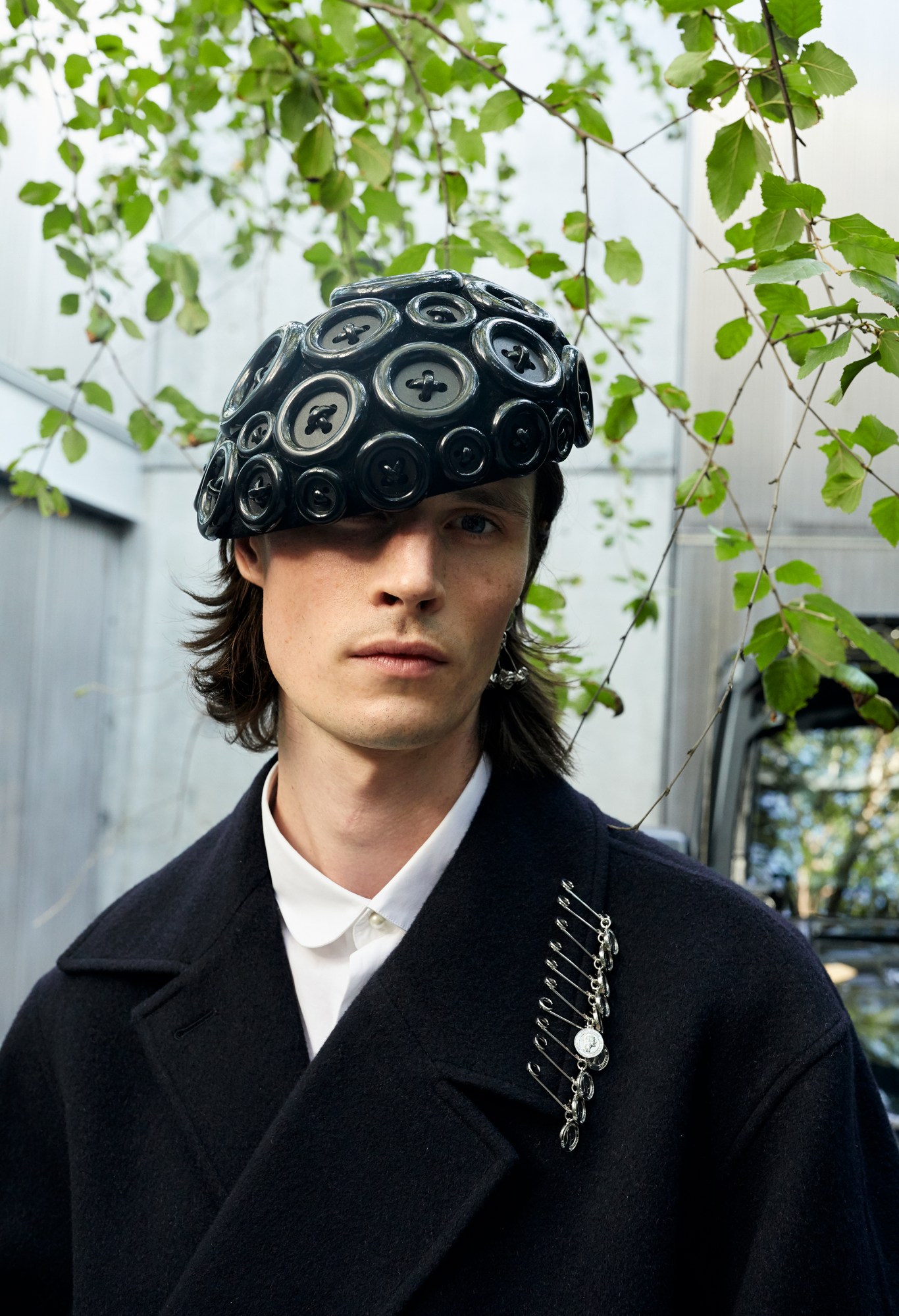
Neneh Cherry
“Judy was extraordinary. His work was extraordinary. Someone will look at his work in 100 years and be like, ‘What the fuck is this? This is amazing!’ It’s like when you see something from the 1920s that looks so futuristic now. It’s alive and poignant. That, to me, is how Judy’s work is. It’s in time. I met him in the early days, maybe at New Cavendish Street, which is where the Buffalo headquarters were — Ray, Judy and Mark lived there. I remember saying to Judy, as soon as I can find some postal sacks, can you make me a jacket! I was serious about it, but it was also a way of striking up a conversation. It was a bit like being in the playground and you want to be friends with someone but you don’t know what to say. There was a mutual interest and attraction there. I felt like he saw something in me that he liked. In his presence, I always felt fabulous.
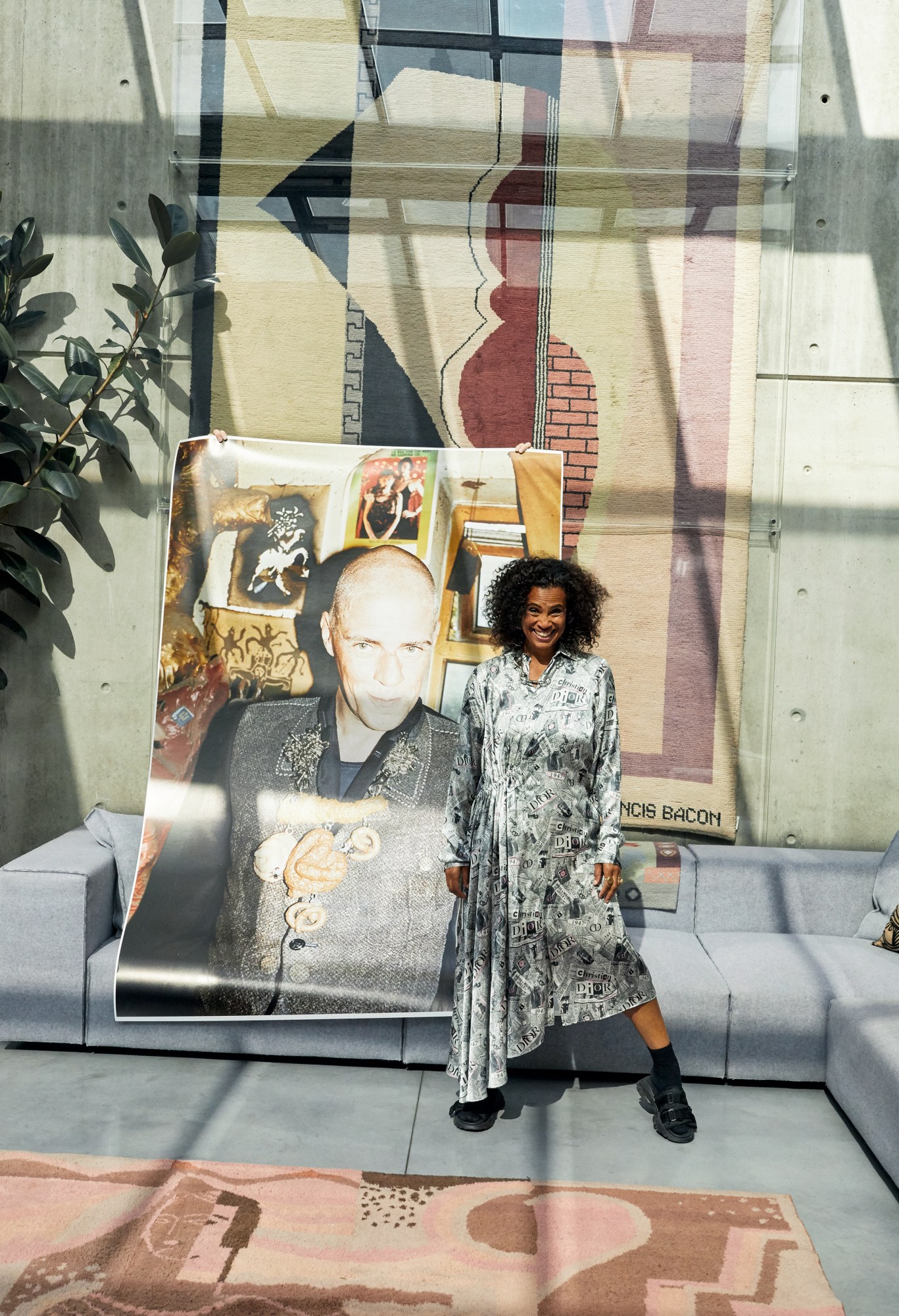
Then Ray got sick and as he was ill, he was living with us and Ray said to me one day, ‘I’m not going to make it but I think you should work with Judy.’ That’s how it started. Of course, he was right. He had amazing intuition and had worked with Judy on things and he knew what he was talking about. That was an order we followed.
When I try to think about it, I don’t really know how we did it. We did a lot of our work together like that. We knew when something was right. Judy’s eye and instinct were amazing and he knew me so well, so he knew what to pull and then it was the combination of the two of us. There was a cross contamination, bringing things from the street to more high fashion things. It was very symbolic of that time, especially when you look at it now. We weren’t overthinking it too much. In New York, we used to go out and take refuge in 14th Street and go to the junk stores and use it to make ourselves fabulous. It was playful and always tipping that hat to hip-hop with the earrings and the symbolism of the guy on the street in a big car with a big gold ring. It felt really good as a woman to put those things on; that wasn’t how a young woman was supposed to look.

We took the home with us wherever we went. I’d be cooking some chicken and Judy would be there sewing something or hanging out with the kids. We’d go off on these crazy flights with the baby walker, the slings, bags of clothes, the bouncer — it was a relentless tempo! We were living in the bungalow at the Chateau Marmont at one point, we had a little kitchen and had been riding around in limousines filled with Pampers all day. We’d get some champagne, food for the kids and we’d sit on the hill. That was how we stayed sane. I remember at one point everyone was going crazy looking for a room key for the hotel, no one could find it because Judy had turned it into a necklace.
As much as he could be scary sometimes — and some people were scared shitless of him — he was the most precious, caring, tender human being I’ve ever known. One of my closest friends. The godmother to my children. My brother, sister, best friend. The last day that he was up and around, he made himself a coffee and lit the last cigarette he’d smoke in this lifetime and he started making this gesture as though he was sewing. That was the last thing he ever did. He was making things until the end.”
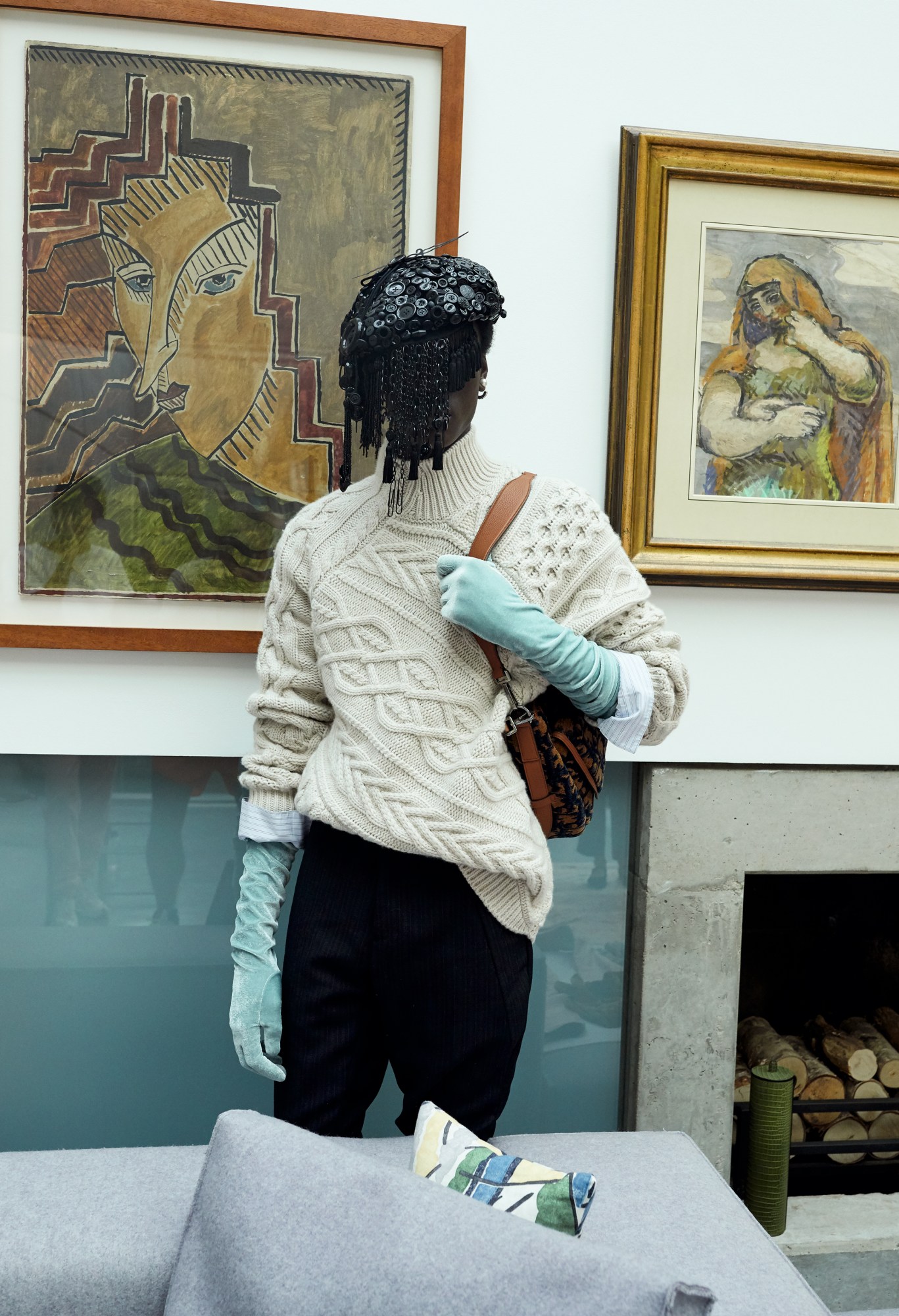
Terry Jones
“Judy was an outstanding individual who fitted the ethos of i-D right from the start: it’s a DIY aesthetic. You don’t have to stick to the rules, or stick to the things presented to you by a fashion magazine. What we always encouraged was customisation and Judy never wavered. He wasn’t about trends, he was an artist who produced what he did, and the way he sourced things was always uncompromising. The recognition he got within our sphere allowed him to infiltrate the mainstream. He started to collaborate with the designers who were inspired by him. His legacy is that there’s now a generation that sees those possibilities. It’s what you put value in, the value can be stuff that other people would throw away. That idea of waste was something he couldn’t stand. The idea of what you can make and re-work is a very important ethos for right now. He gave Tricia one of her favourite possessions: a scarf made up with discarded keys and safety pins. She’s had it for 30 years and each time she goes out with it, everyone loves it. It’s timeless, a work of art.”
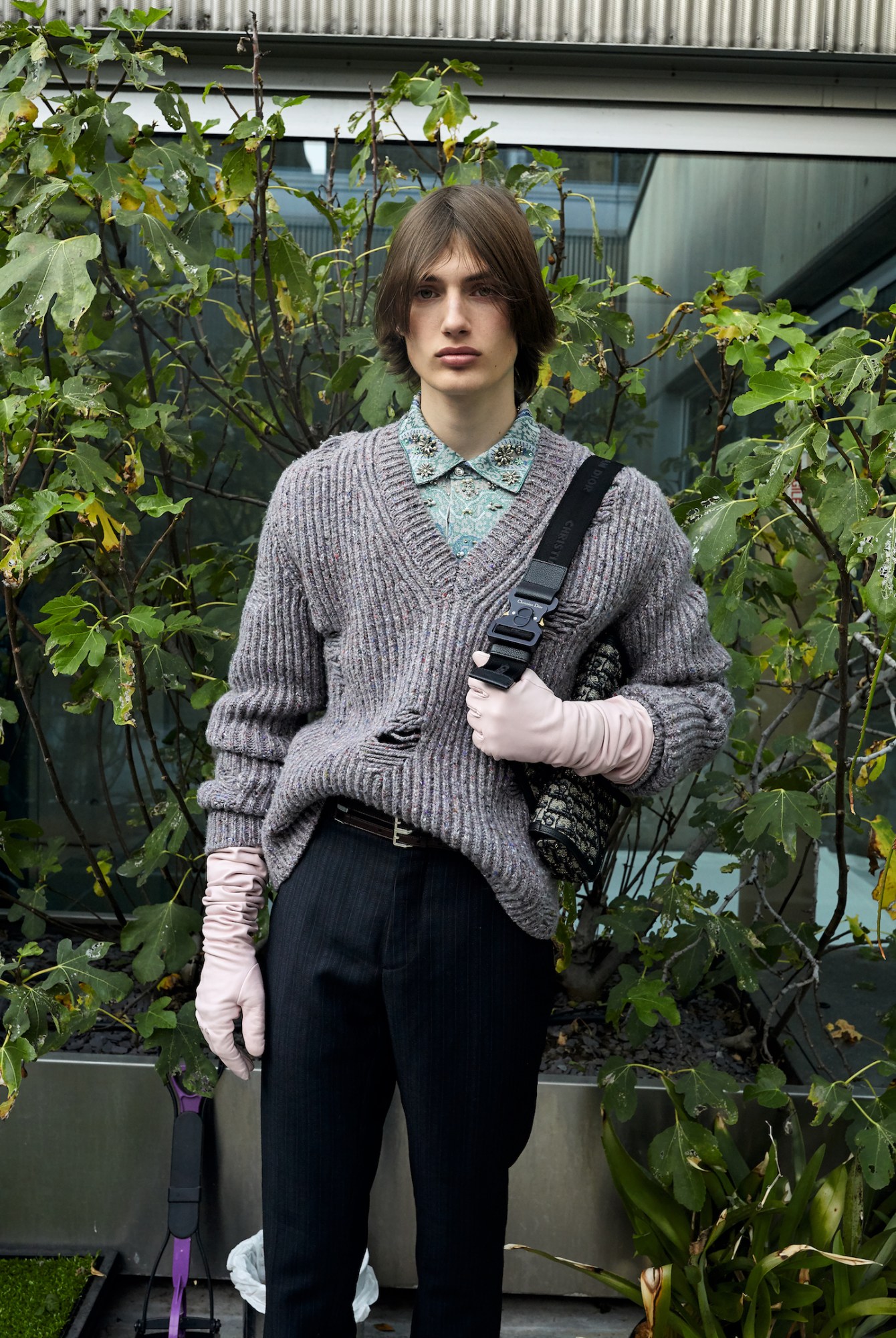
Jeremy Scott
“I first saw Judy’s work in the pages of i-D, which, at that time, I got as a hand me down from my friend’s older sister who had access and cash to purchase an imported magazine! It was magical! Judy had the most amazing talent to take something common, something overlooked and discarded, and turn it into the most desirable crown full of jewels.
When I was working on my Moschino AW17 menswear collection, I was doing the fittings and had been wearing my vintage Judy Blame beret with all his trinkets on it. I decided to take it off and put it on the model and then it just looked great with everything and tied it all together in my head. I asked Judy to work on the collection and I had so much fun collecting trinkets for the berets and jewellery that we collaborated on. I was going through every tiny little box at every flea market and keeping my eyes peeled on the road for anything shiny and discarded that could lend to this story. I was so excited to share all my treasures with Judy to combine them together to create the pieces for the show. It meant so much to me to have his enthusiasm and approval and it truly fulfilled a childhood sense of gaining the approval and accolades of someone who I looked up to so dearly and held in such high esteem.
I hope that Judy’s legacy will be that of his unbounded creativity and the artistry of resourcefulness, the art of reusing, and of refusing the status quo.”
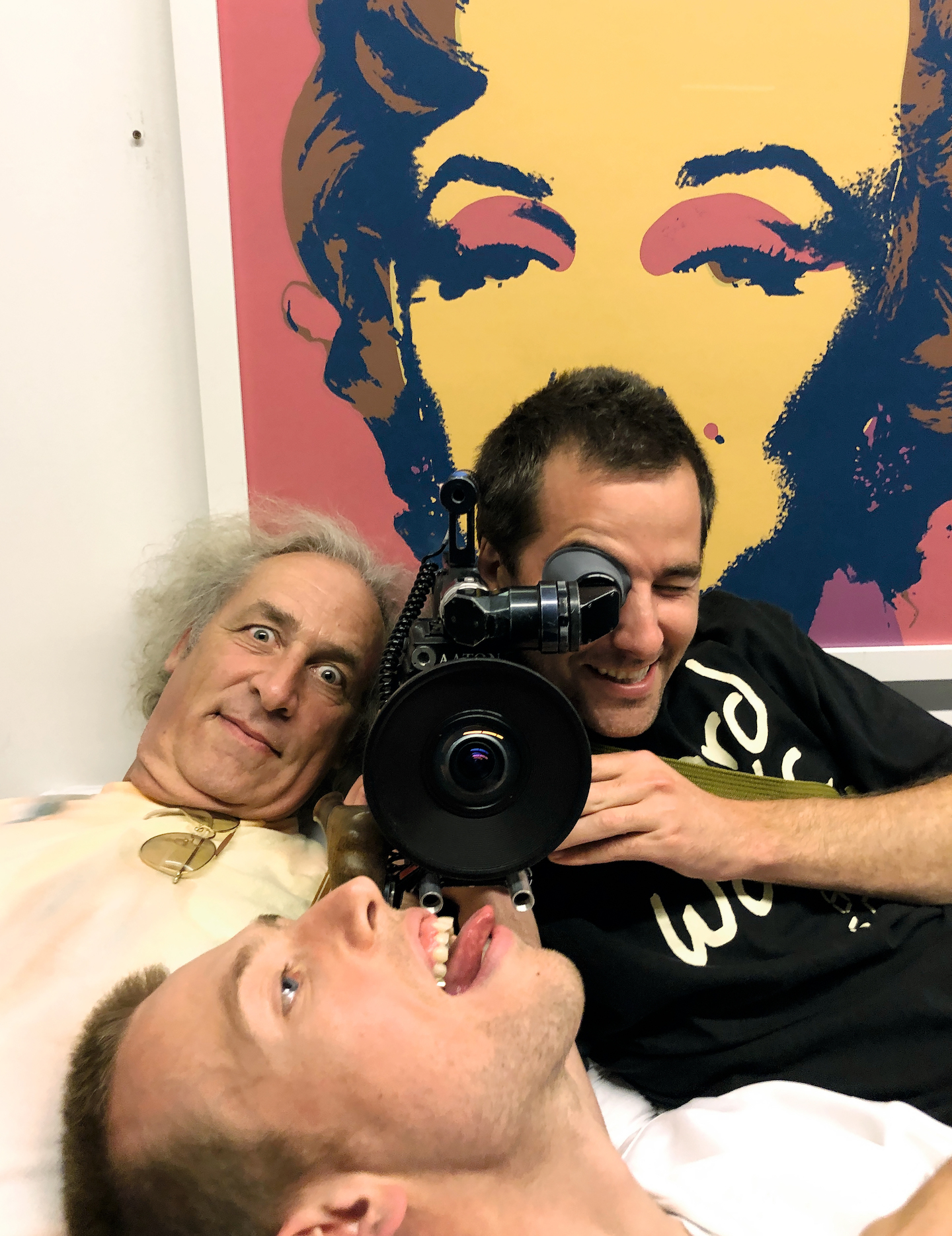
Mark Lebon
“I first met Judy down at a little club called the Silver Slipper in Paddington. Rachel Auburn had brought him down and I thought he was her boyfriend. He had a skinhead haircut and looked like a frightening thug. I was delighted and relieved when Rachel told me he was called Judy Blame and that he was gay. He always took the piss out of me but in a way that was so astute. The main thing that he wore then were these old penny brooches. He’d stuck Britannia on the outside instead of the Queen’s head, and he put a clasp on the back and sold the pennies for a pound. I was just like ‘Fuck, this is the man for me!’.
He summed up my aesthetic: upcycling, objet trouvé. Not only was he great fun and very sarcastic, but our aesthetics were so close, we just needed each other. He wasn’t a stylist at the time, but we went on to do images together. Initially he went under another pseudonym, Fred Poodle, because he didn’t want to confuse the styling with his jewellery work. We were inseparable.
Then, when I introduced him to Christopher Nemeth, it was the final piece of the puzzle and they started working together. It was before stylists were muses or creative consultants in the way they are now. Upcycling and stuff like that, it was really alternative at the time. When he started working with Michael and Stephanie Nash, it became politicised in a way that was really good and that is so relevant to now. He was making T-shirts and Michael Kopelman at Gimme 5 produced them, and Kim Jones was interning there at the time. Judy made some really good shit that dealt with issues around race, war and pollution and he connected it to art with emotion.”
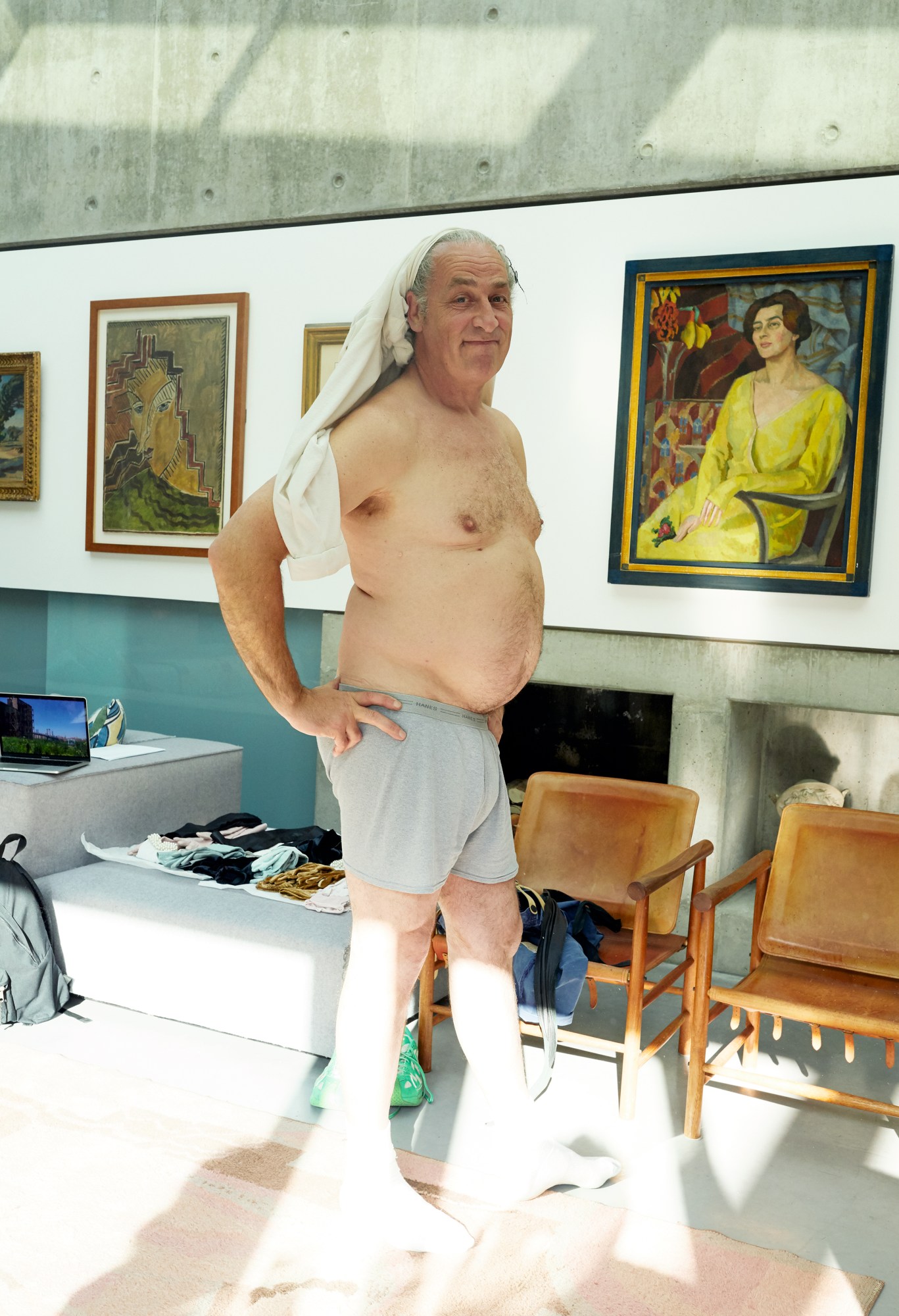
Gareth Pugh
“I first met Judy when I was doing work experience. I had no idea who he was before he walked through the door. I was fresh out of Saint Martins and he was super supportive, he was someone who had a lot of experience, and just got a lot of energy from new ideas. Judy was similar to myself in that we do things with what we have available to us, which isn’t always a conscious decision. You work within your means. I loved that when he went to work on Louis Vuitton, he came back with bags of stuff he’d stolen to make his own jewellery! It’s about doing the best with what you have in front of you.
Judy had this particular skill to turn a pile of crap into something beautiful. He never deviated from his style, he is the apex of someone who had a dogged, almost monastic approach to his work. He always remained in his lane and people were drawn to him, but he never changed to satisfy someone else, which is something I really admire. There was a constant belief in his work. It’s certainly nice to see that someone was able to do that. When there’s such uncertainty, you need people with confidence in their view of the world in order to reinvent it.”
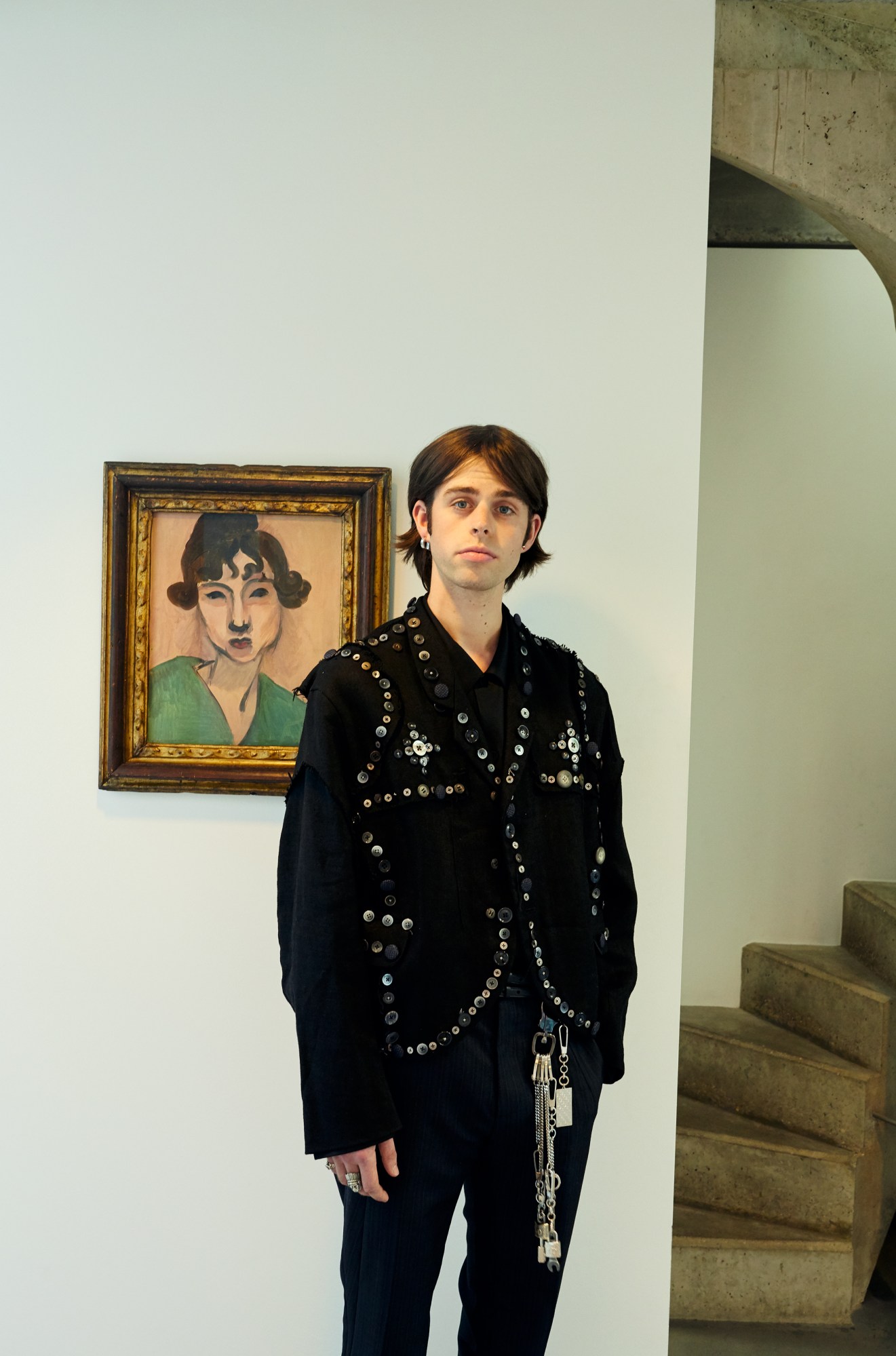
Rei Kawakubo
“I love his rebel spirit and originality, the devotion to creation that shines through in the work.”
Karlie Walsh
“I met Judy 12-odd years before he died. I used to have a badge machine and a little office with Princess Julia. It was such a funny little office and Judy used to come down with Dave Baby and we would stay up making badges. We did loads. We used to the save the silver foil from packs of fags and my mate’s mum, who still gets the milkman, would give me the milk bottle tops. Judy would save everything, even his smack foils from when he was into that sort of thing. You would get these really beautiful patinas on the foils, and you’d be wearing them out and get a strange, knowing look from someone on the bus! In a way, that was what his work was all about. He was just interested in making something beautiful.”
Lulu Kennedy
“The thing about Judy is that a lot of us feel like we grew up knowing him through his work. I grew up in Bristol, slipping into nightclubs where the Wild Bunch, who would later become Massive Attack, would be DJing, and I was a massive fangirl of Neneh Cherry. I was probably in the same room as him when I was 13, having snuck illegally in a club. For me, it was a life changing moment when I saw Neneh on Top of the Pops — she was pregnant and Judy had styled her in cycling shorts and an MA1 jacket with her belly out. She looked incredible; it was a feminist stance and that established him as my ultimate hero.
There was never a time when he wasn’t at the forefront of what I considered the most important fashion. It was so complete. There was nothing left vague. How he spoke was how his work looked. It was concise and precise and just straight to the point. He could close down a whole topic in one sentence with a lot of wit, and he could do so much with so little, whether it was words or smearing black paint on a face. There was a resourcefulness and elegance in the sparsity of what he did, and a lot of it was intuition. Sometimes, when I chat to kids who want to do Fashion East, they don’t know who he is and so I send them away to look immediately. With all his connections to art and music, he wasn’t just a fashion person. His work is a language, it seeps in subconsciously. He had the full spectrum of a true artist.”

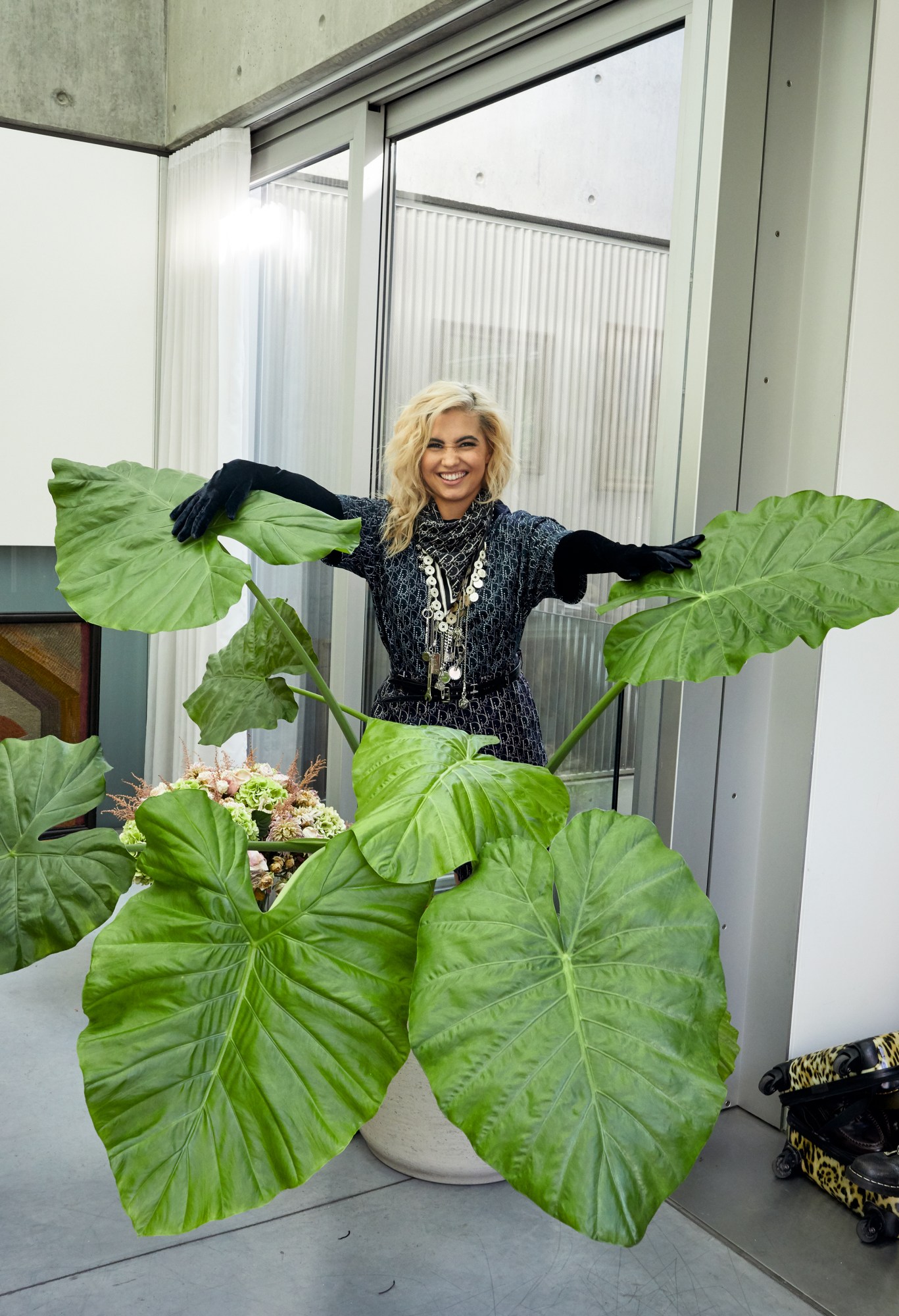

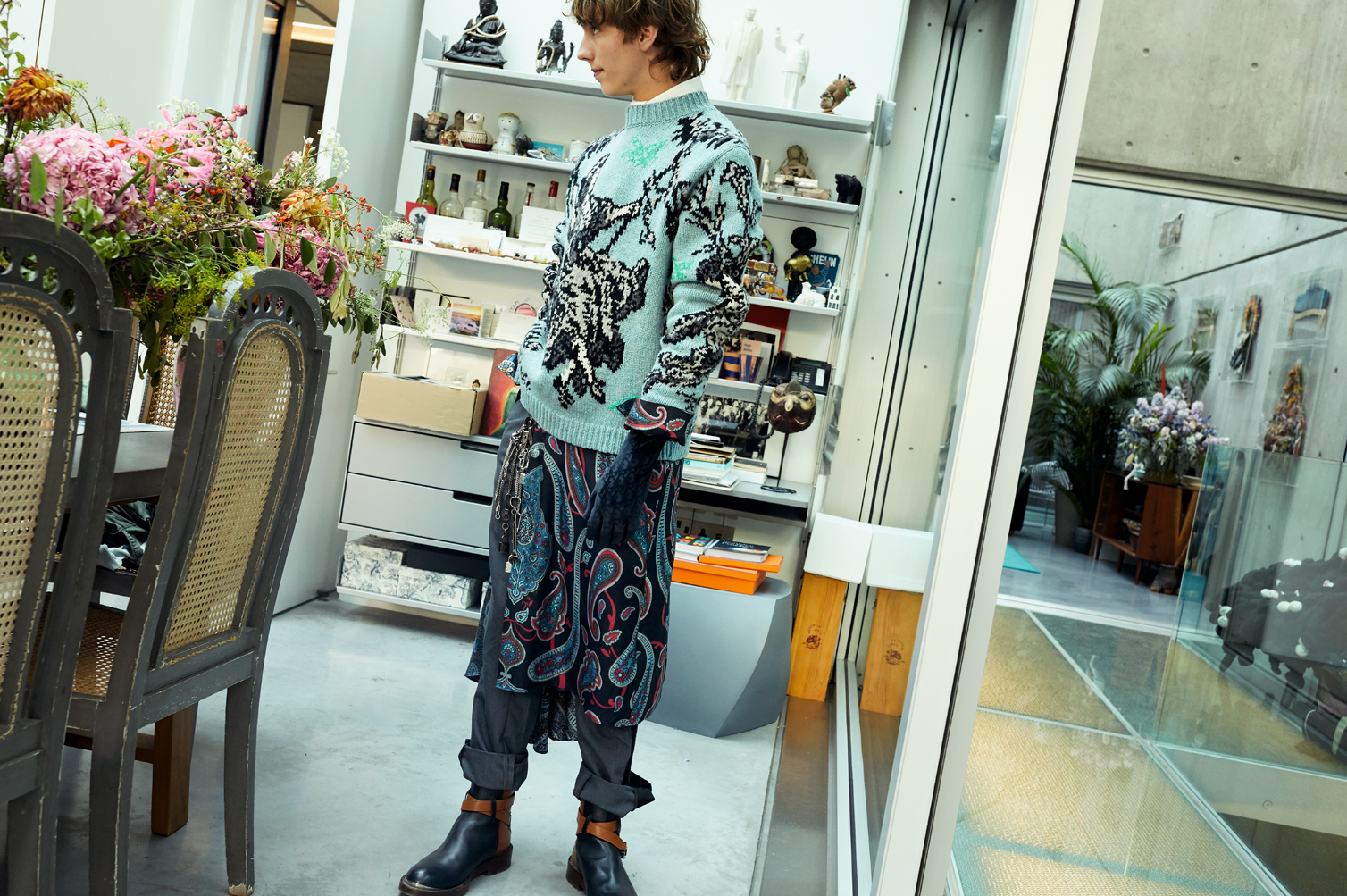
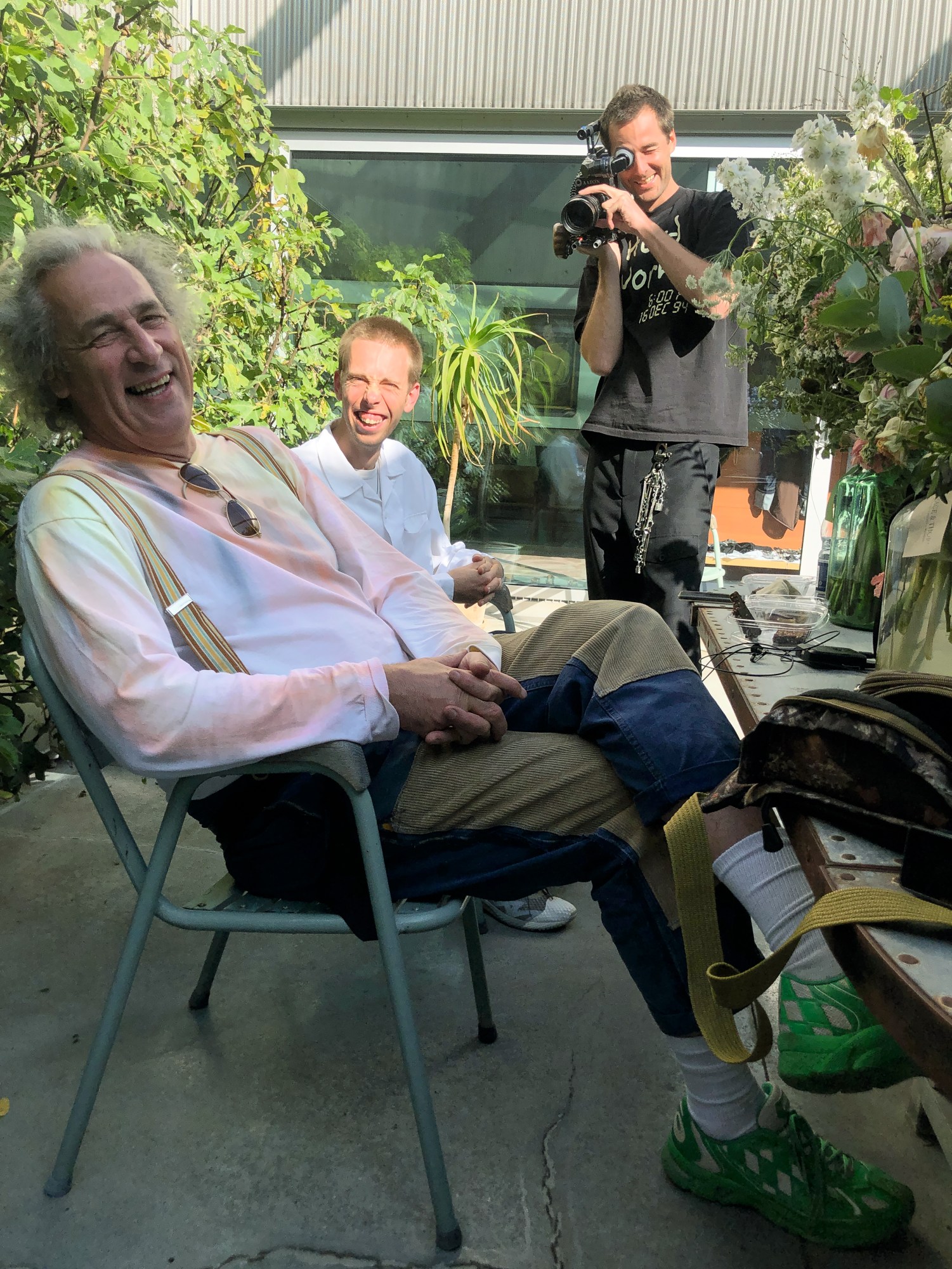


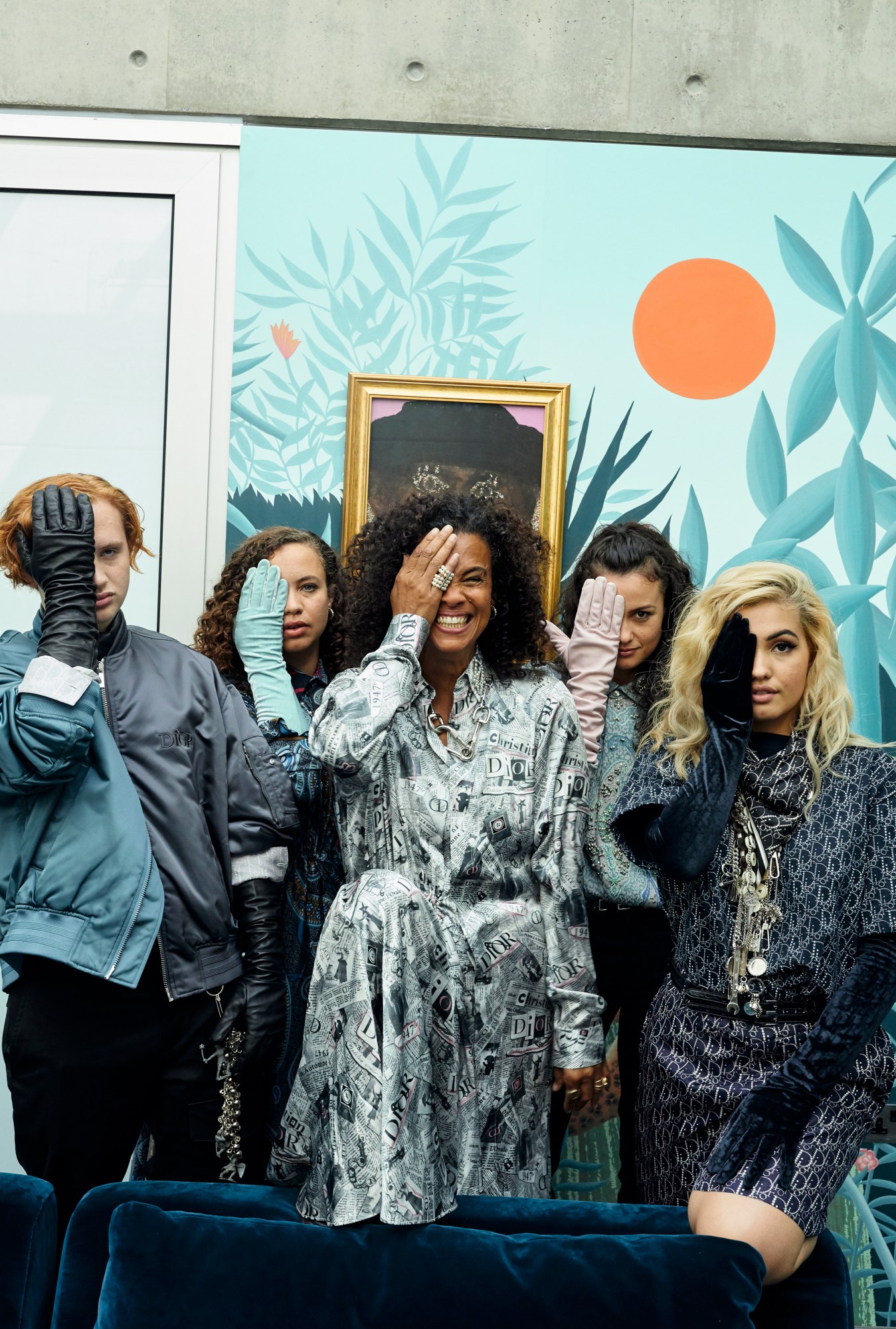
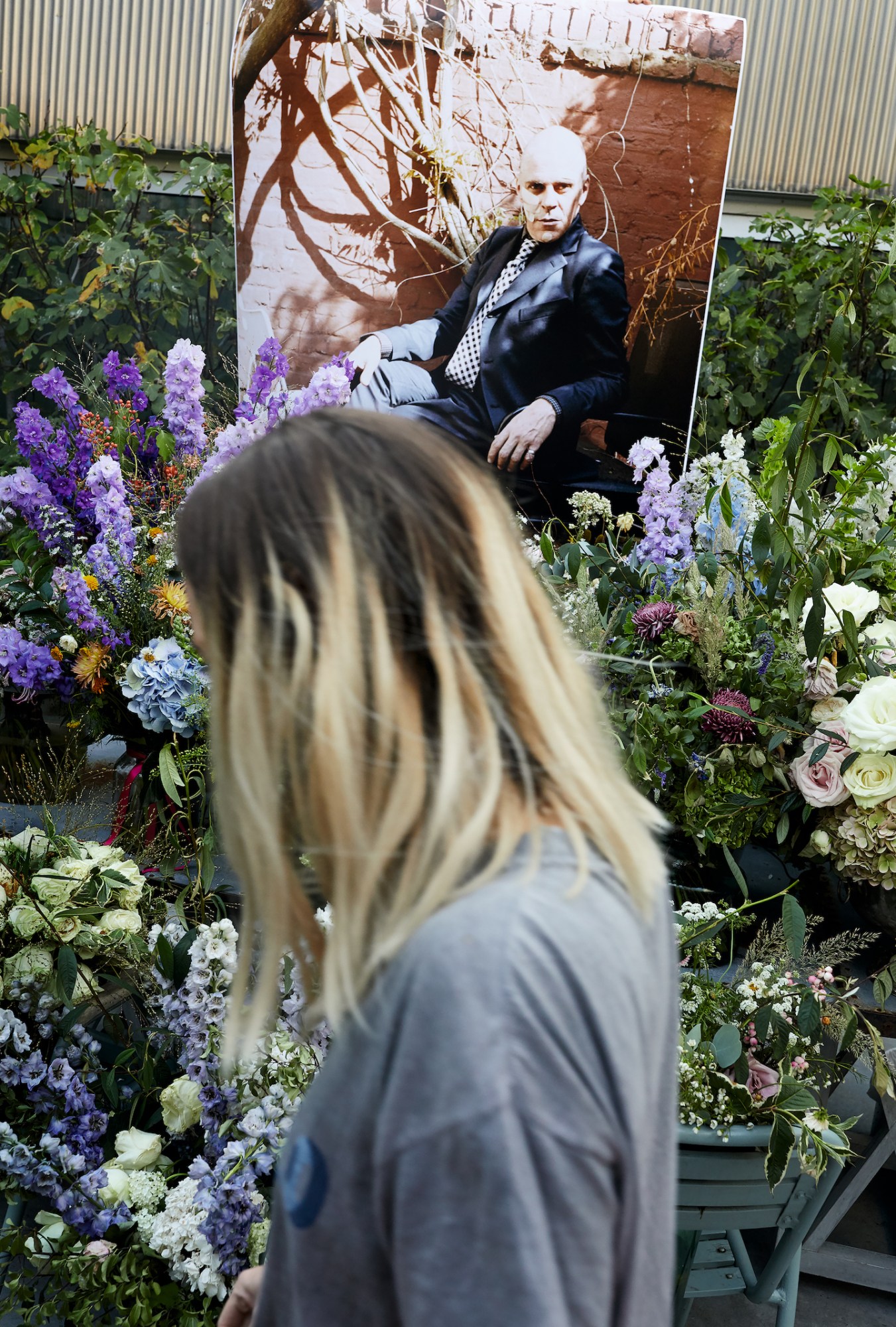
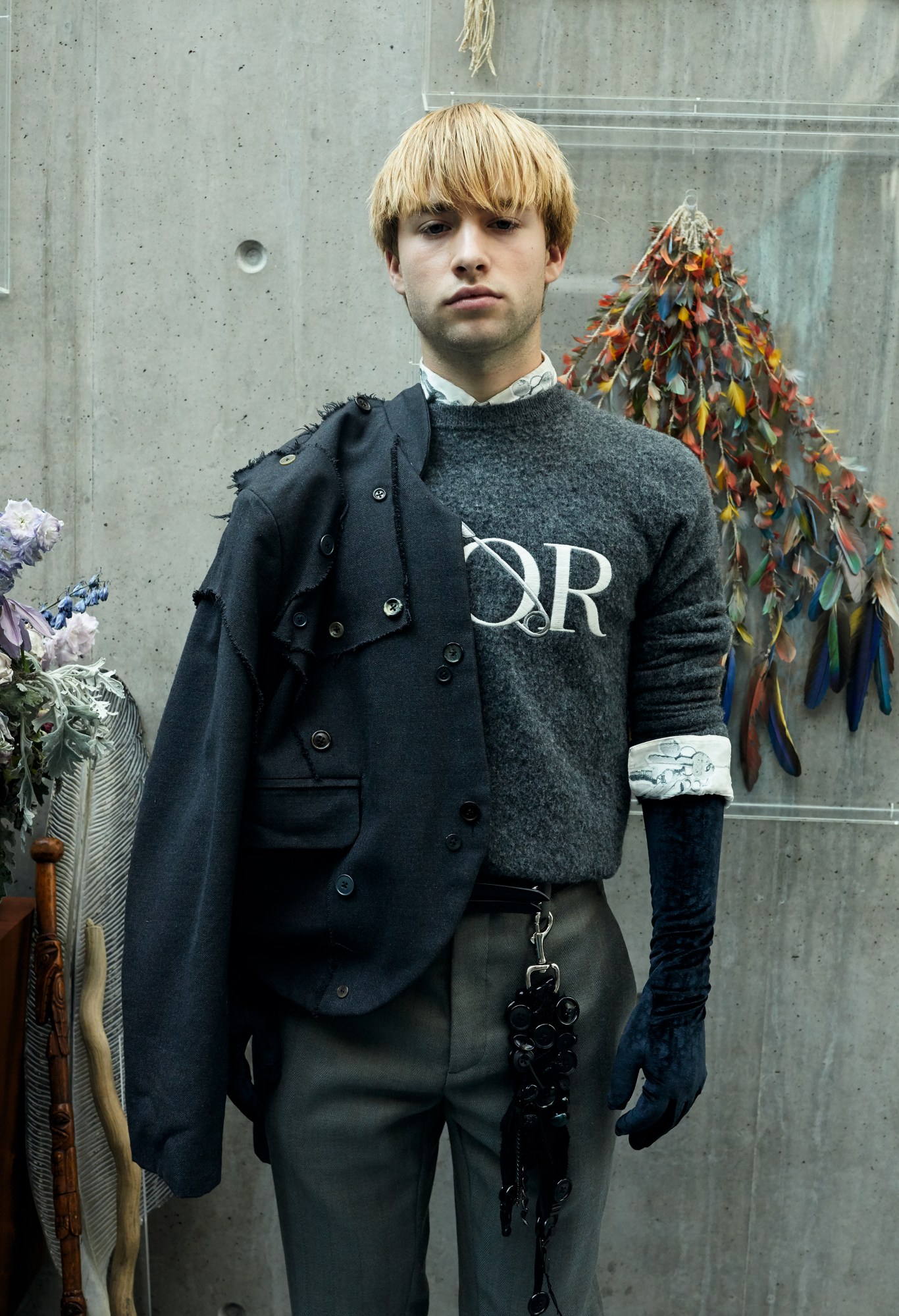
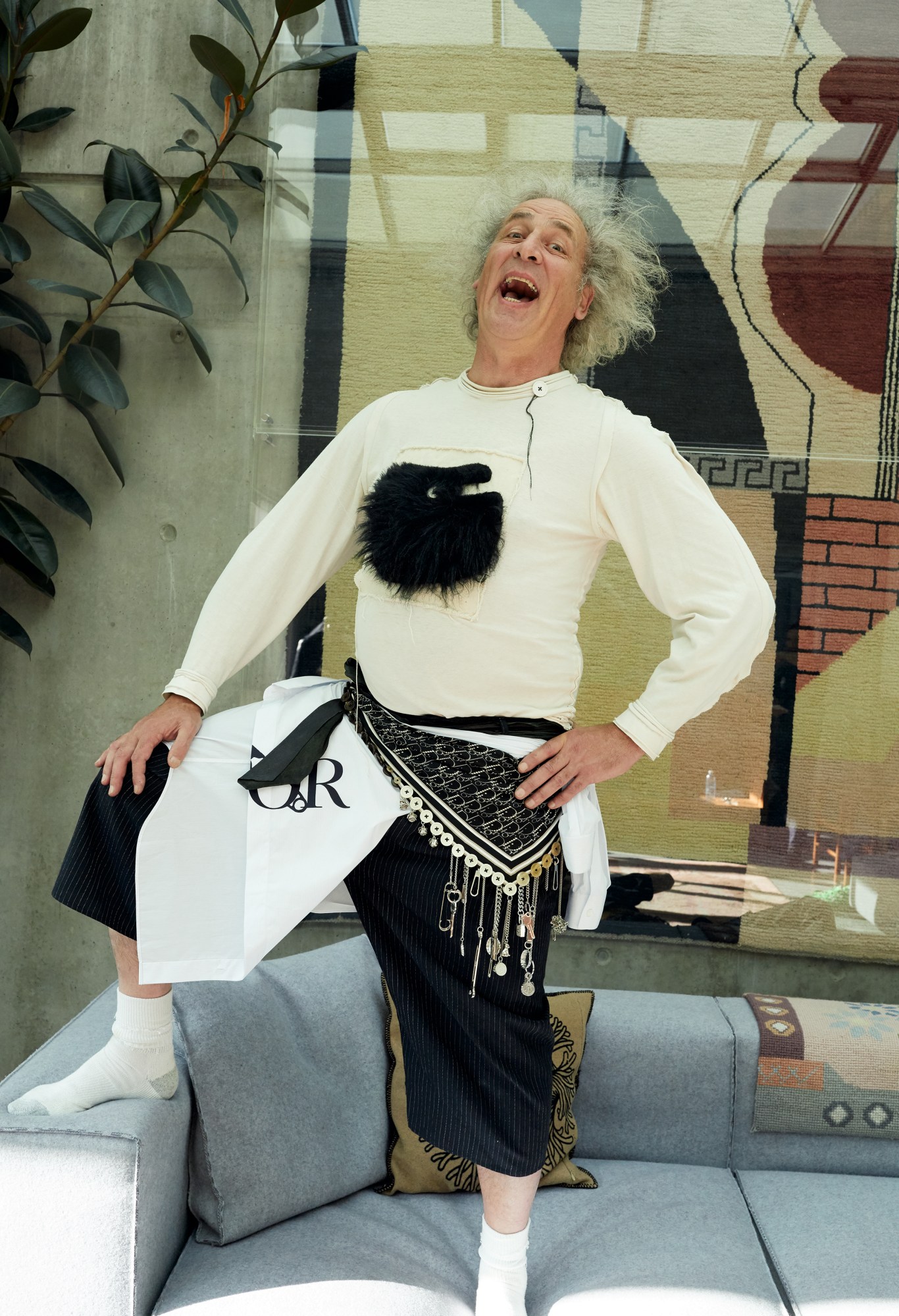
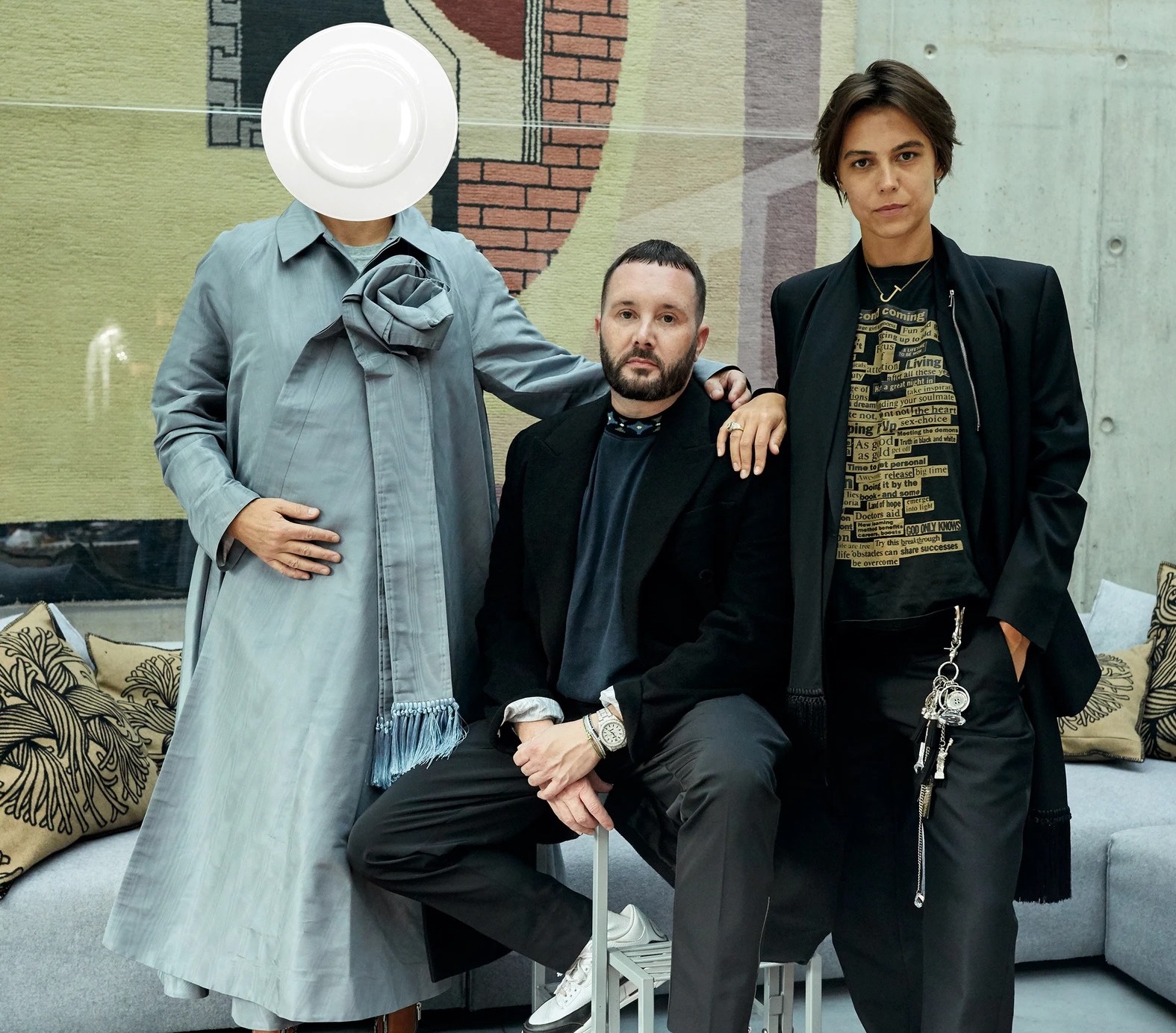
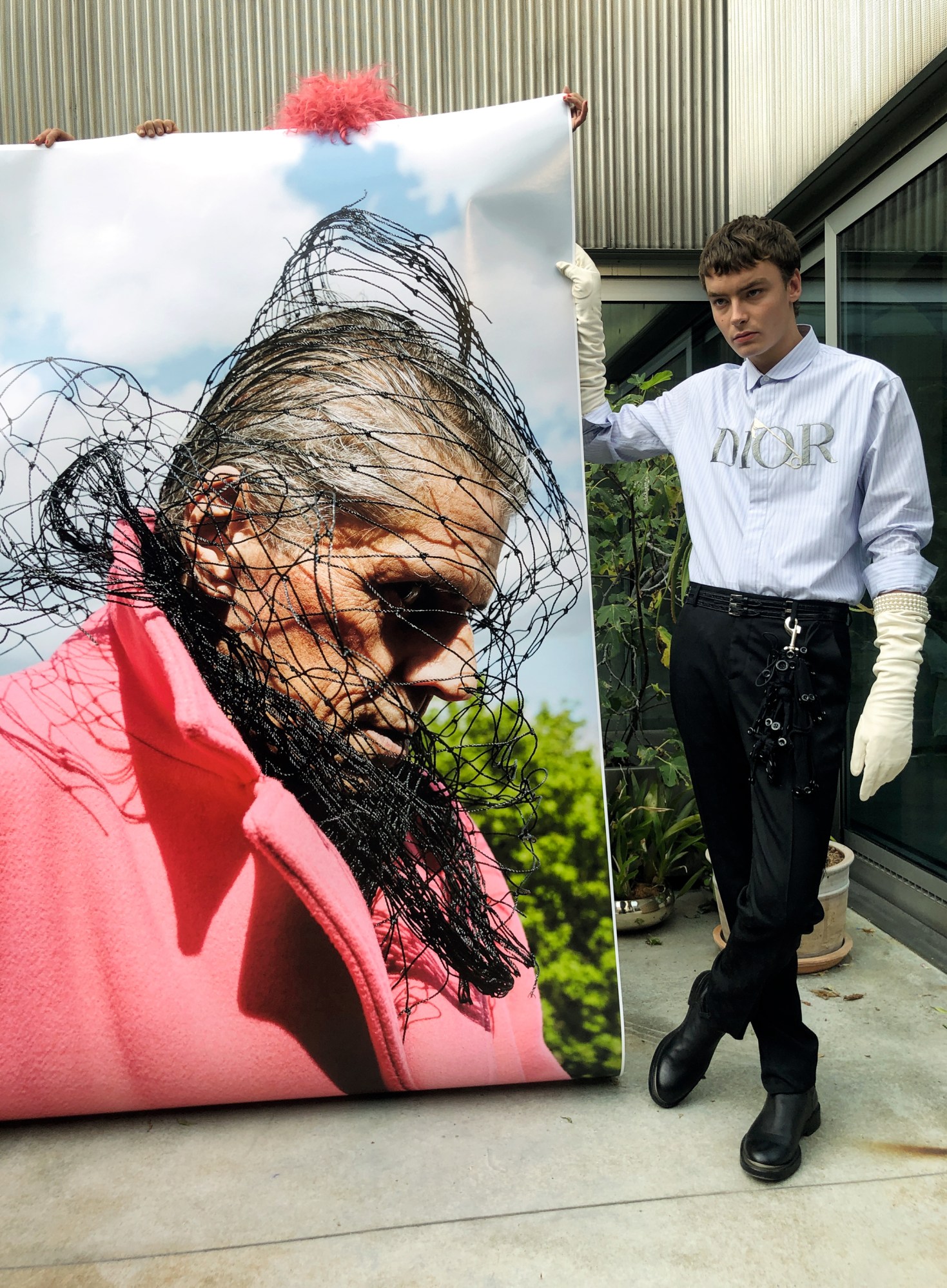

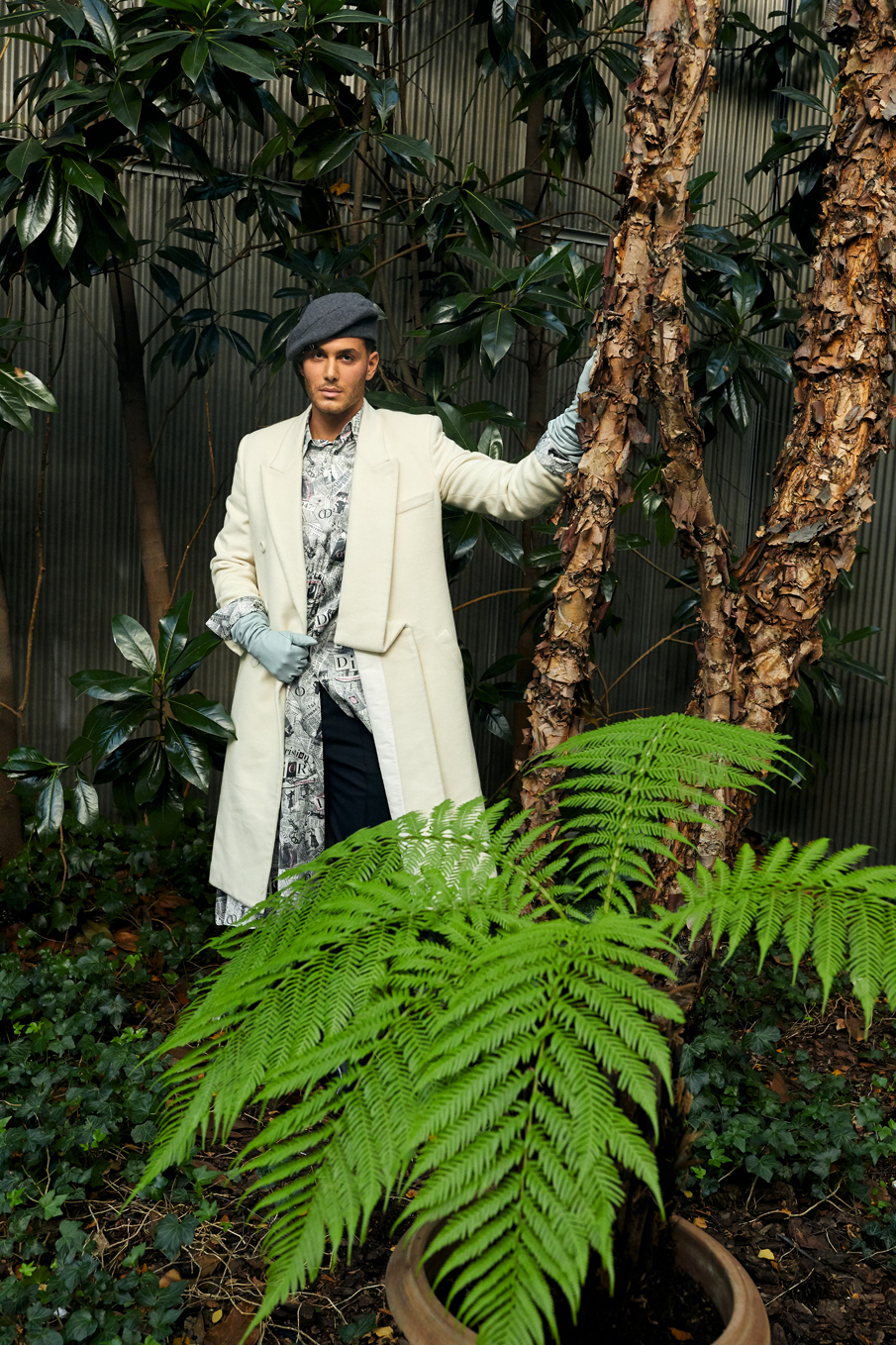

Credits
Photography Juergen Teller
Styling Kim Jones and Karlie Shelley
Creative partner Dovile Drizyte.
Hair Lyndell Mansfield at Of Substance using got2b.
Make-up Anna Payne at Of Substance using Dior Backstage Collection and Capture Totale Super Potent Serum.
Hair (Mabel) Rio Sreedharan at The Wall Group using Dyson.
Make-up (Mabel) Emma Osborne at One Represents using BY TERRY. Photography assistance Tom Ortiz.
Hair assistance Jenny Green and Natalia Alves.
Make-up assistance Faye Bluff.
Models Neneh Cherry. Naima and Flynn Karlsson. Tyson and Mabel McVey. Mark, Tyrone and Frank Lebon. Sonny and Louis Starkey. Otto Nahmmacher and Peter Dupont at IMG. Babacar N’Doye at Elite. Lachlan Mac at Kate Moss Agency. Thatcher at Supa. Kim Jones. Juergen Teller. Dovile Drizyte. Andrew Westermann and Fai Khadra.

